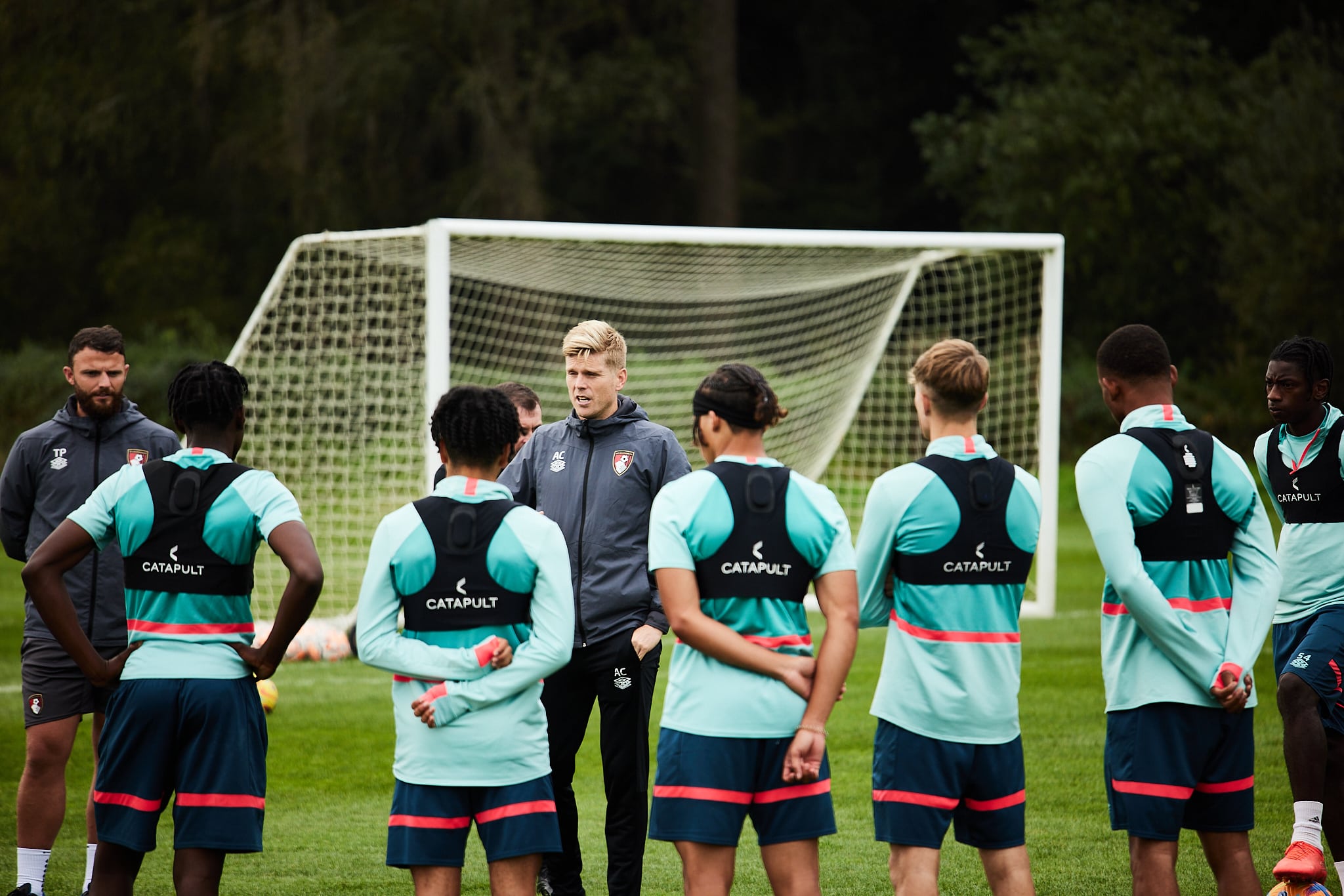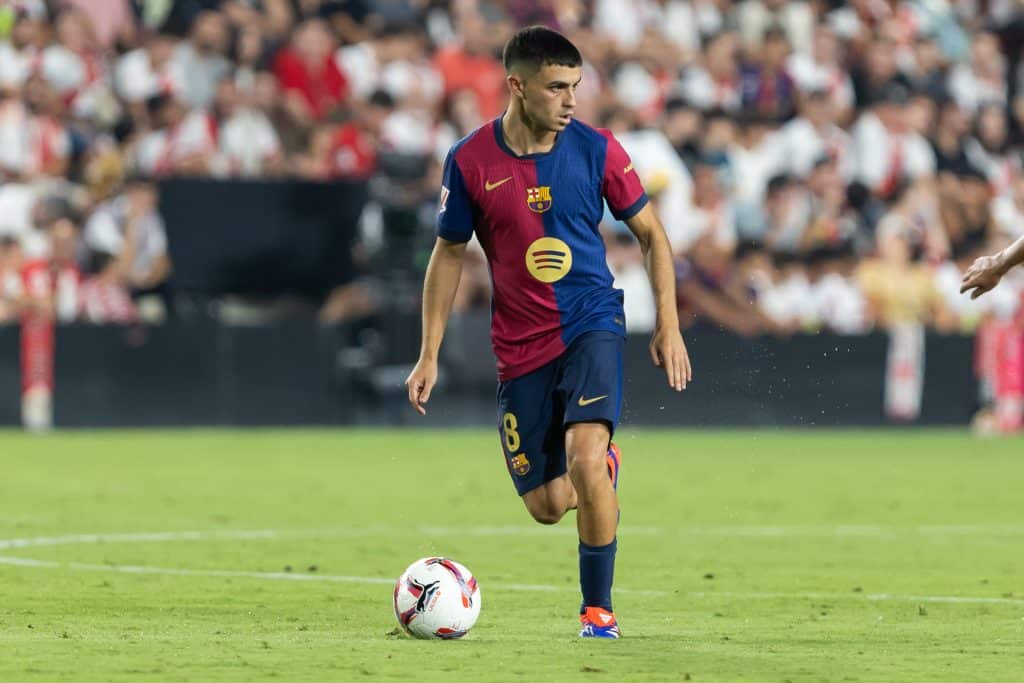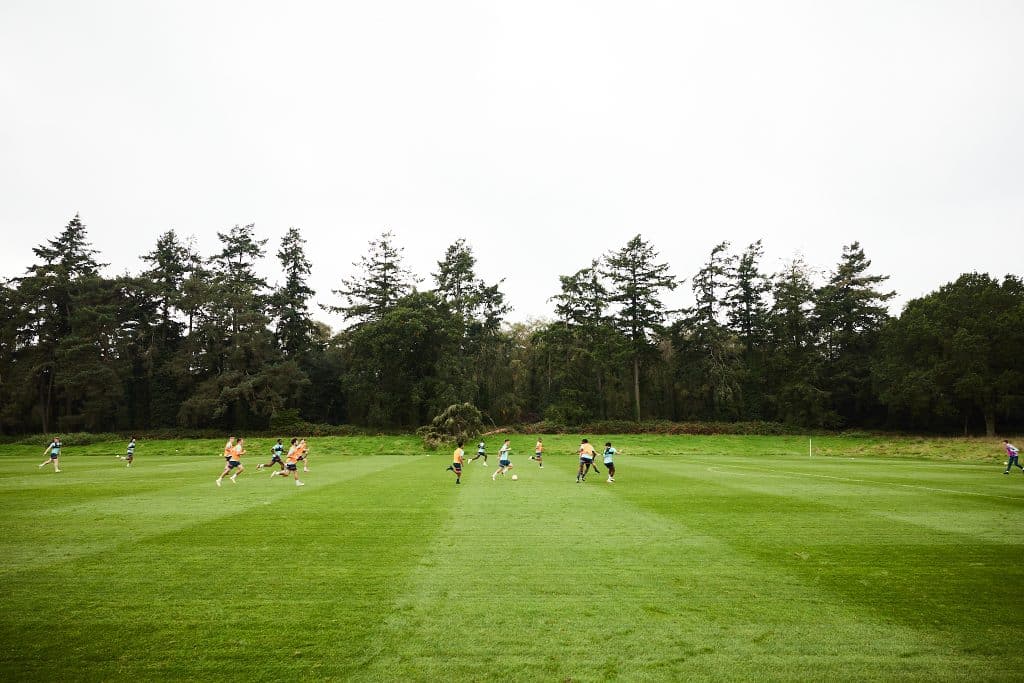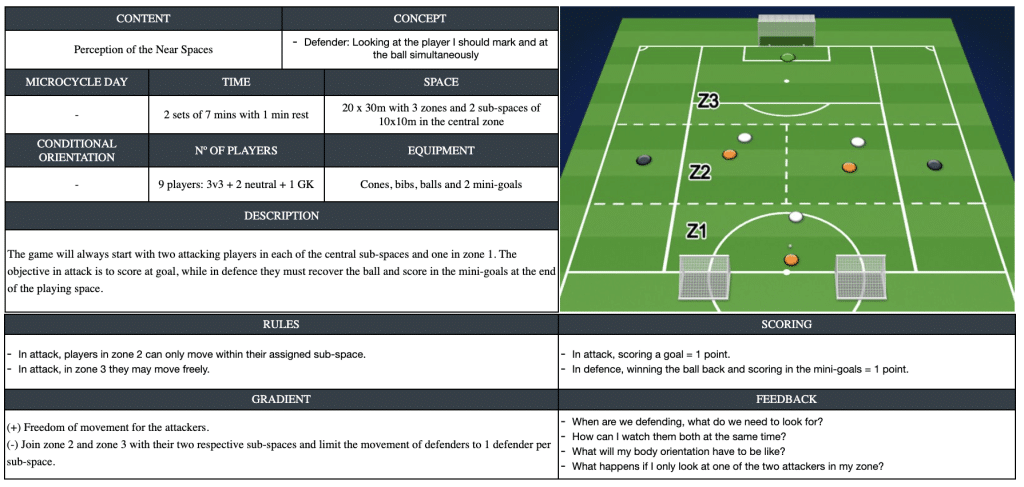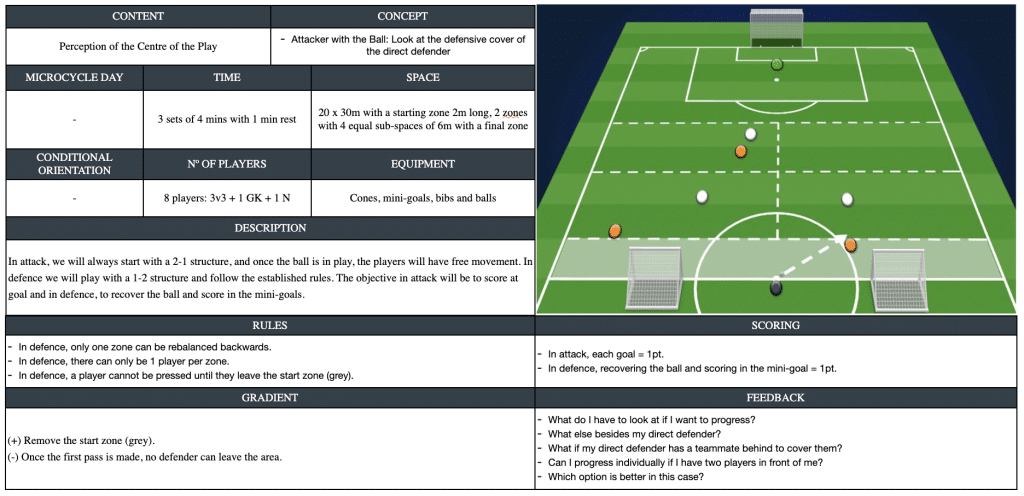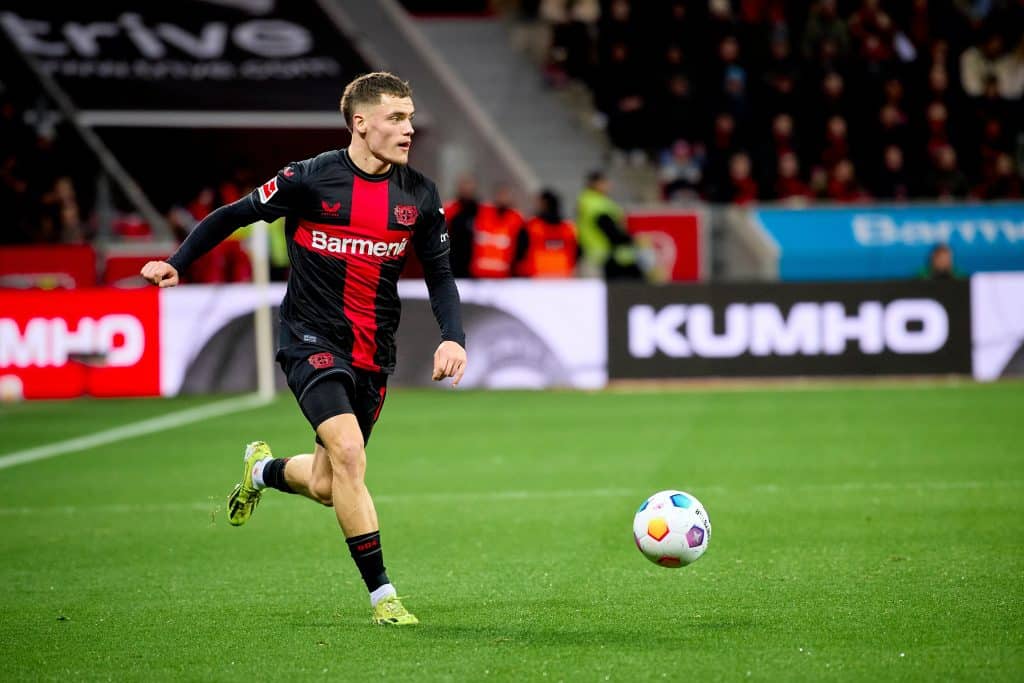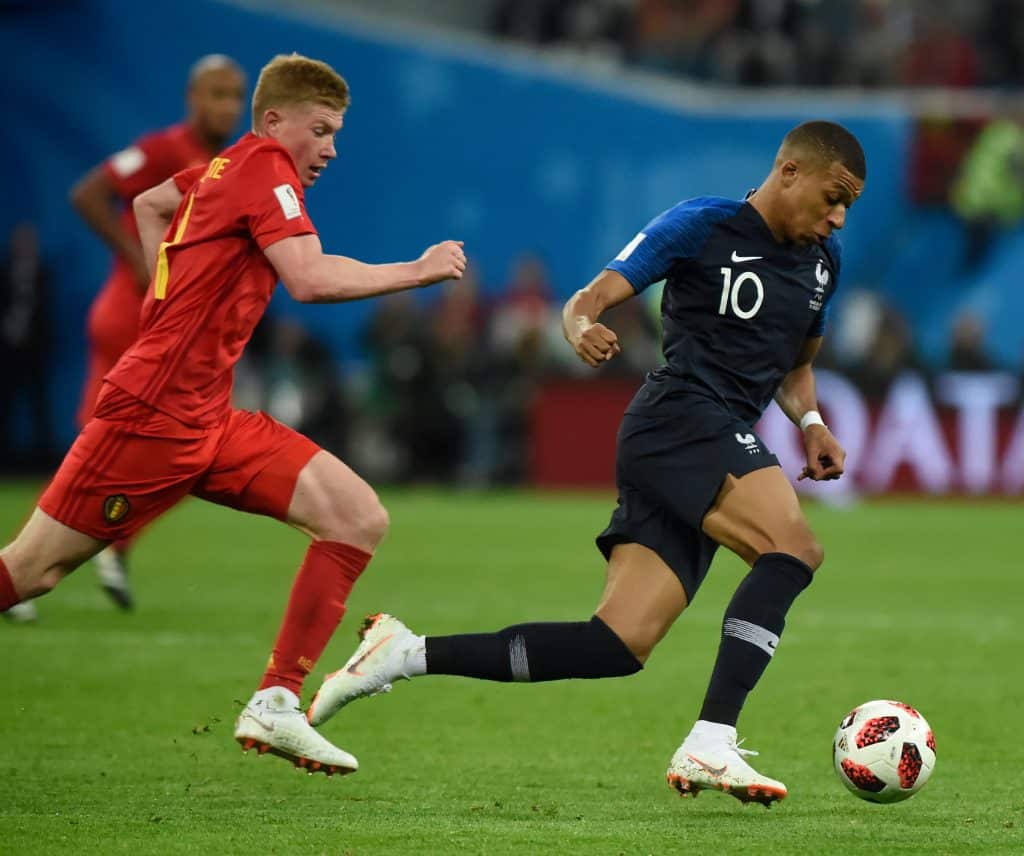Football is a sport that requires players to make split-second decisions. From choosing the right pass to finishing in front of goal, every action in the game requires a combination of perception, decision-making and execution. In this context, neuroscience has emerged as a key scientific discipline to understand and improve the decision-making ability of players, since, through the study of the brain and its processes, the cognitive mechanisms that influence performance on the pitch can be optimised.
Neuroscience applied to training aims to train and enhance the executive functions of the brain in order to improve motor performance. Attention, memory, the perception-action cycle, decision-making and impulse inhibition, among other functions, can be trained. Here are some key aspects:
1. The Role of the Brain in Decision Making
Decision-making in football is a complex process involving several regions of the brain. One of the most fascinating aspects is the brain’s ability to recognise patterns and predict future scenarios. In that sense, elite footballers develop an advanced working memory, i.e. they are able to process multiple stimuli at the same time and anticipate what will happen in the play.
Image 1. Pedri in a LaLiga match for FC Barcelona. Source: Shutterstock
In fact, a study by Ibarra (2019) found that the information processing of these footballers is twice as fast as that of the general population. This ability is key in high-pressure situations, where a single second’s advantage can make the difference between success and failure.
2. Key Factors in Decision-Making
- Perception and Attention:
The first step to making an effective decision is to perceive the environment correctly. Peripheral vision and visual scanning are essential to detect the movement of teammates, opponents and the ball. Players with better perceptual skills are able to anticipate actions and react more quickly.
Image 2. Training task to improve players’ selective attention in variable situations.. Source: Coaches’ Voice
Selective attention training is therefore essential to filter relevant information and avoid distractions. Exercises that incorporate multiple stimuli, such as reduced tasks with variations in the rules, help to improve this skill.
Here are two examples of tasks to train perceptual skills:
Task 1:
Task 2:
- Cognitive Speed and Working Memory
The speed with which a player processes information directly influences their performance. In football, where situations are constantly changing, working memory plays an essential role. This type of memory allows short-term information to be retained and used to make decisions in real time.
Skilled players have the ability to give more creative and efficient responses without the need to process all the information. Instead of analysing every detail in isolation, their brain quickly accesses previous experiences and selects the best option almost automatically. As Naito and Hirose stated in a 2014 study, ‘reduced brain activity generates less load, allowing you to perform many complex movements at once, and thus your response allows you to have more neurons free to do other things or anticipate other situations’.
Image 3. Florian Wirtz in a Bundesliga match for Bayer Leverkusen. Source: Shutterstock
- Emotional Control and Stress
Stress and pressure affect the quality of decisions. Excessive activation of the limbic system can lead to impulsive responses or mental blocks. For this reason, it is crucial to train emotional management so that players remain calm in critical moments, as by reducing anxiety, players can process information more efficiently and make better decisions under pressure.
3. Application of Neuroscience in Training
Most of the decisions that football players make, due to the short time they have to solve playing situations, come from a more emotional than rational route (i.e. with greater influence of the limbic system over the rational brain). Otherwise, the pros and cons would be weighed up and it would be too late, leading to paralysis by analysis, which would be extremely detrimental to sporting performance.
In this way, the most complex situations are solved unconsciously. This is one of the reasons why it is convenient to train from the variability and complexity of sport, providing the necessary experiences in the brain and thus be predisposed to perform and solve complex situations in the play or development of the activity.
Image 4. Kevin De Bruyne and Kilian Mbappé in a World Cup match. Source: Shutterstock
With all of the above, we can affirm that decision-making in football is not only a matter of technical skill, but also of brain processing. Neuroscience has shown that players’ performance can be optimised through cognitive training, improving perception, mental speed and emotional regulation. Integrating this knowledge into the preparation of footballers not only gives them a competitive edge but also contributes to their holistic development on and off the field.
Would you like to learn more about high performance training?
In the Master Online in High Performance Football, you will learn in a comprehensive and complete way a training method of tactical preference, which will allow you to deeply understand all the structures of high performance football.
You will apply the basics of structured training and its relationship with the Individual Fundamentals by Position (IFP), and you will discover how to train the team from complex thinking, relating it to the Universal Collective Fundamentals and the Line Collective Fundamentals.

